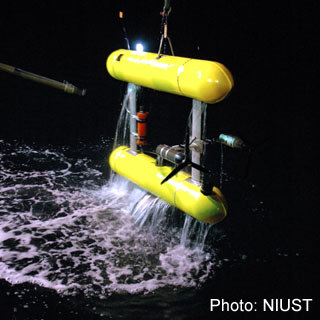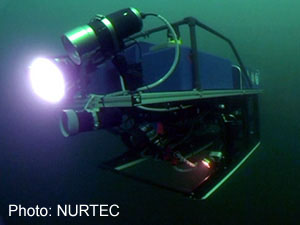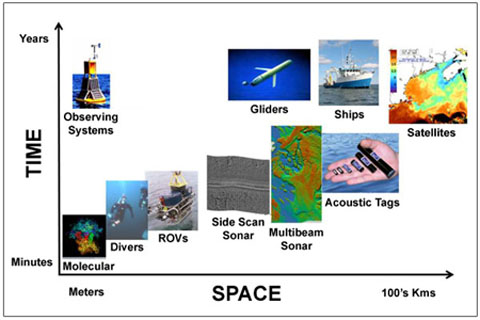 |
|
| SEARCH | ABOUT US | ||
|
|
Center for Ocean Science Education Excellence Technology and Engineering for Knowledge (COSEE-TEK) The goal of COSEE-TEK is to innovate and adapt approaches to improve the quality, availability, and impact of ocean science education by linking science, technology, and engineering to catalyze learning and communication of STEM topics for teachers, students, scientists, and the public. COSEE-TEK addresses the crucial linkages between science, technology, and engineering in the field of oceanography and provides educational resources that highlight the history, breadth, and advancement of oceanographic technologies. The Center is a collaboration between the University of Connecticut’s Northeast Underwater Research Technology and Education Center (NURTEC), the Department of Marine Sciences and Sea Grant program, as well as Project Oceanology and The Mystic Aquarium/Institute for Exploration. Other partners include: American School for the Deaf, National Association of Black Scuba Divers, UConn School of Engineering, and Louis Stokes Alliance for Minority Participation. COSEE-TEK develops, coalesces, highlights and evaluates Science, Technology, Engineering, and Mathematics (STEM)-related broader impact resources pertaining to a large number of ocean science technologies. To address the need for enhanced integration of technology into K-12 curricula, COSEE-TEK develops innovative activities and resources based upon the latest undersea technologies and applies emerging information and communication technologies to disseminate this content in meaningful, engaging ways. Ocean science offers a multitude of opportunities to demonstrate how unique and emerging sampling, observation, information and communication technologies can be applied to each of these strategies to improve teaching and learning. Specific objectives of the center include:
Each of these objectives is met through a series of innovations and activities that continually seek to link ocean science and technology with education and outreach. The Center develops new partnerships and programs that catalyze learning and communication opportunities for researchers, STEM educators (both formal and informal), students and the public. The Center also maintains comprehensive evaluations of the effectiveness of its approaches and media to deliver and disseminate science and technology content. During the first year, activities involved the development of Technology Teams that are comprised of:
 Faculty from the University of Connecticut Department of Marine Sciences lead the initial Technology Teams based on their research spanning the time/space continuum of ocean technologies. Dr. Evan Ward has developed techniques to apply fine scale video endoscopy to the study of bivalve mollusks and the observations and data collected from in vivo observations of bivalve feeding have shed new light and understanding on the process of particle feeding in bivalves and other suspension feeders. Dr. James O’Donnell’s research utilizes both long-term, small spatial scale observing systems (buoys) and most recently mid-spatial scale technologies (gliders) to understand coastal physical processes and dynamics. Dr. Heidi Dierssen’s research combines very large scale observations made by satellite remote sensing with smaller scale in situ optical measurements to develop algorithms to quantify phytoplankton and colored dissolved organic matter in optically complex waters. Dr. Penny Vlahos has developed passive water quality sensors that use ethylene vinyl acetate (EVA) embedded with markers to sample for a number of existing pesticides and emerging (flame retardants) contaminants in Long Island Sound. As the program continues, additional researchers will be recruited to fill in gaps in the time/space technology continuum. All the while, an External Advisory Board comprised of representatives from the research/technology, formal education and informal education communities provides recommendations on the selection of the Technology Teams, additional opportunities for technology and engineering partnerships and general Center operations.  It is a natural evolution to expand ocean literacy with knowledge about the tools used to investigate ocean issues, in particular ocean technologies and the skills necessary to use them. The efforts of COSEE-TEK capitalize upon and synthesize the engaging technologies responsible for the ever-increasing pace of ocean discovery. Furthermore, COSEE-TEK strives to implement emerging communications technologies to present such information to a broad audience of learners of all ages. In doing so, the Center seeks to enhance ocean science and technology literacy and engage the next generation of STEM workforce. |







